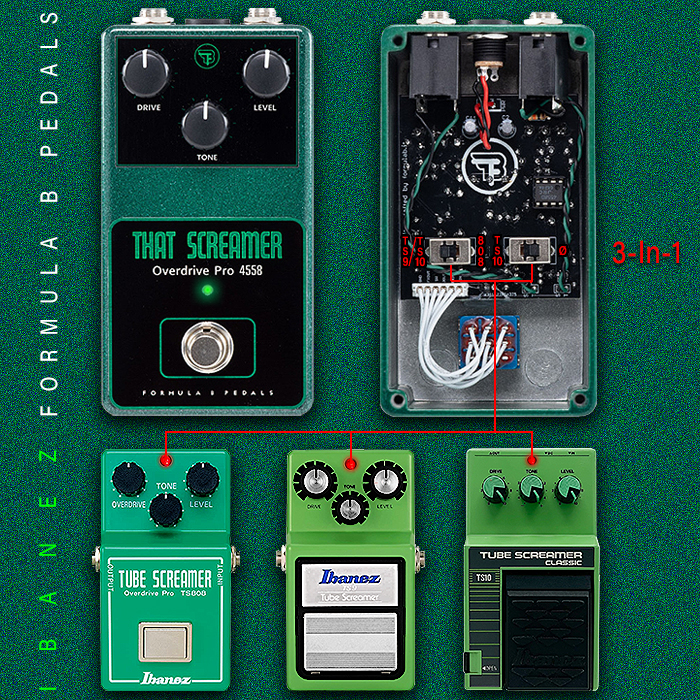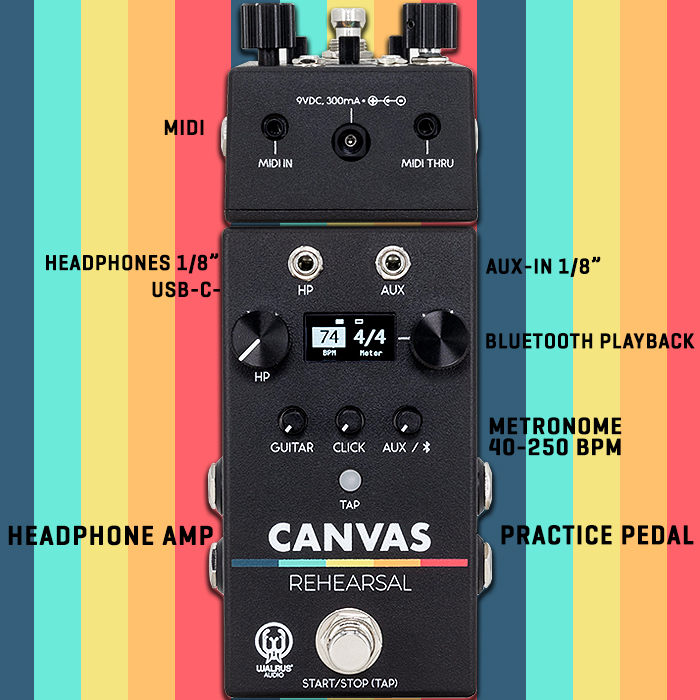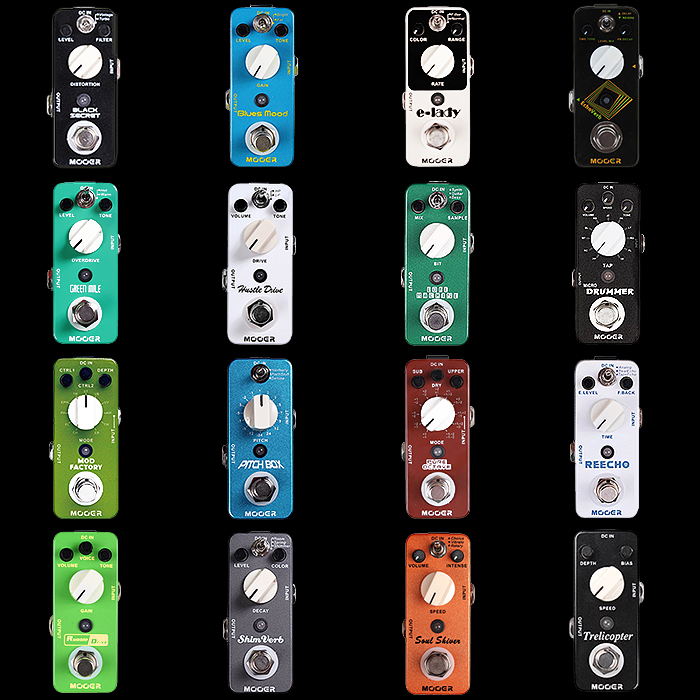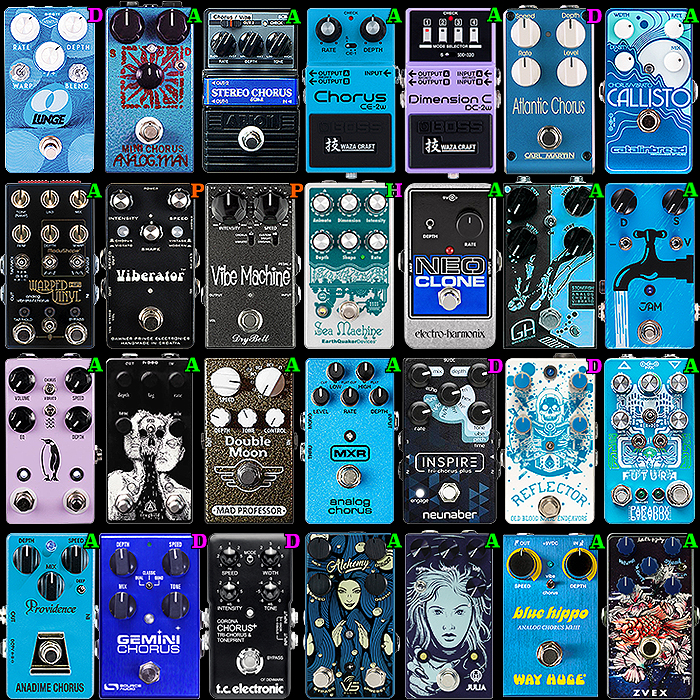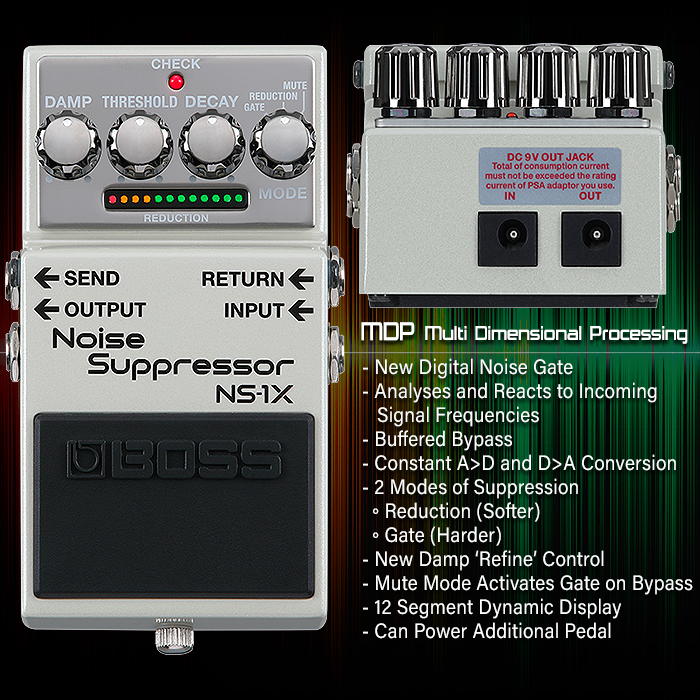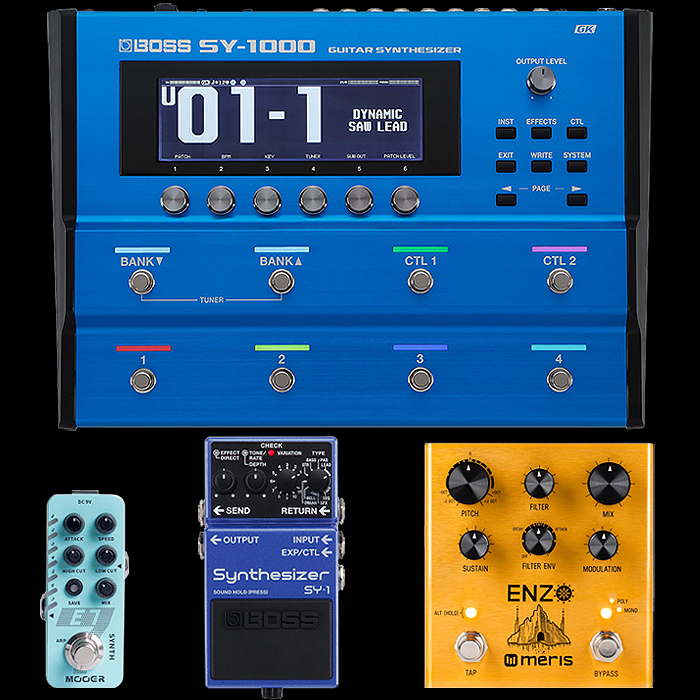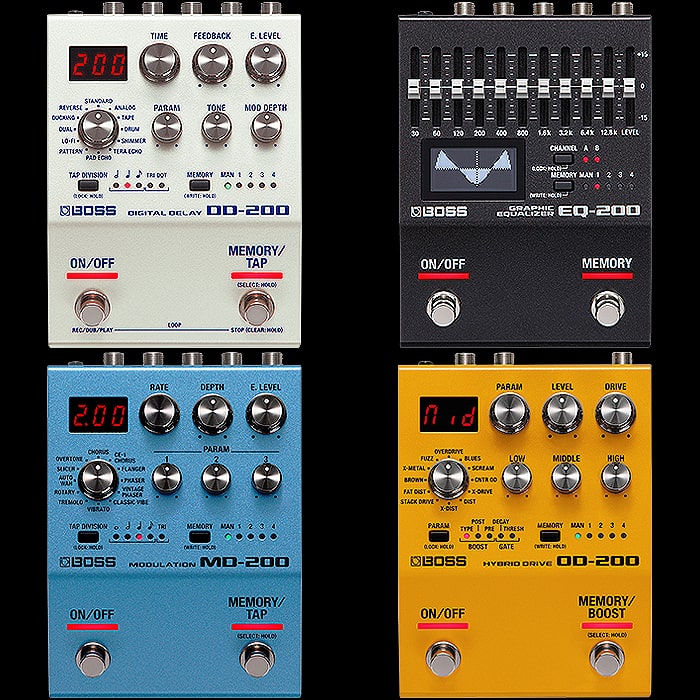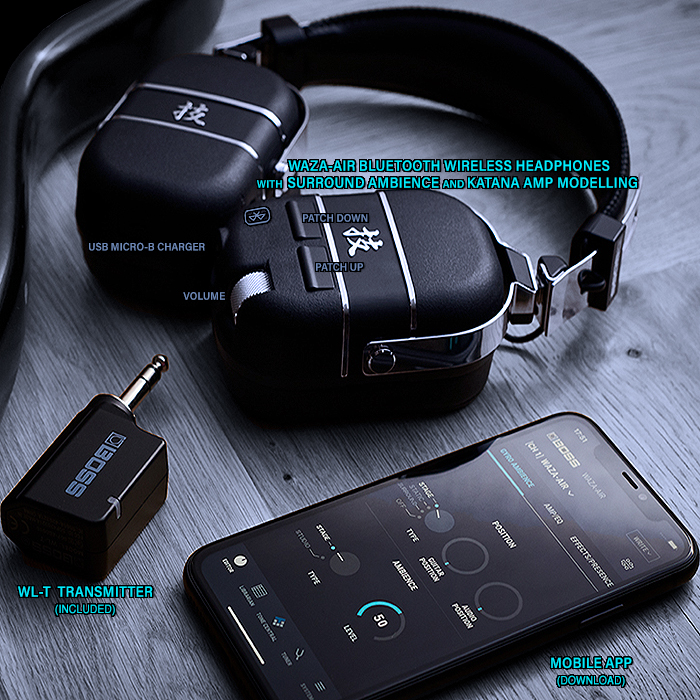Boss's 3rd Generation OC-5 Octave introduces state-of-the art tracking and new Upper Octave, while expanding on the very best of the OC-2 and OC-3

In some ways you could say that the side-effect of the current pandemic has actually been helpful to Boss on this occasion as it has allowed its engineers to spend more time honing the accuracy of its tracking algorithm, and perfecting the authentic replication of the slightly warmer analog Vintage Monophonic Mode of the original OC-2. As factory production slowed right down, engineers had a little more leeway to further refine and calibrate all those controls and functions to the very best levels that they could be.
Even though it comes packed with slightly more technology than its predecessors it is in most ways easier to operate than its immediate OC-3 predecessor, while we do though bid farewell to that one’s pretty cool Drive Mode - but make up for that in numerous other ingenious ways.
Gone is the OC-3’s dual-input-jack system for separate Guitar and Bass inputs - instead we have a useful 2-way switch next to the power input jack on the rear of the pedal. Gone also is the slightly inherent complexity of the Dual-Multi-Mode control of the OC-3 - and instead we have a Waza Craft style : Vintage (OC-2) / Poly - Mode slider switch. And a rather more elegant and refined function on the -2 OCT Range control.
There are obvious Waza Craft overtones here - and for a period this was under consideration as a Waza-style project, yet that would have entailed pure analog Made-in-Japan construction with much higher costs - and actually less accurate tracking and more inconsistent octave playback for the more advanced functions. Boss are particularly proud of how fast and consistent they’ve been able to make their tracking here - obviously benefitting from significant technological advances in processing power and speed / resolution accrued in the intervening time since the introduction of the OC-3 back in 2003. It just made total sense to release this into the mainline range at the more affordable price - which will be £129/€139 and equivalent and available at most dealers fairly imminently.
For me this is the perfect marriage of form factor and function here - and with 3 octave voicings plus the Dry signal - you have a very formidable tool for thickening and deepening your sound. Also by using the RANGE function of the 4th Knob you can do those kind of cool walking basslines - where you only apply the effect to the lower / lowest strings and allow the rest to pass through unaffected. There have been a few interesting sub octave pedals released recently that specialise in just that single function - while here you can apply it as and extra dimension on top of everything else.
And for those who still loved the analog warmth of the original Monophonic OC-2 - the OC-5 delivers the very best digital replica take on that - where the engineers were really able to put the manufacturing delays to good use - and really hone the authenticity of the VINTAGE mode.
I’ve always liked octave pedals - particularly in combination with Synth and Filter pedals - so I will be re-jigging my pedal-chain once more to properly accommodate the OC-5. The slot that the Meris Hedra is most commonly on is my defacto / default Pitch-Shift / Octave style effects position - and I’ve decided actually to move that before the SY-1 Synth - so the SY-1 moves to slot #3 and the new OC-5 goes in on slot #2 (as illustrated further below).
The Boss Octave/r Evolution
There's a lot of interesting history on the different versions of Boss's Octave pedals - in particularly the OG OC-2 - which I will try to skim through as quickly as possible. In essence the OC-2 was another feather in the cap of the pioneering 'Series 2' Boss pedals which remain the most legendary and sought-after group / selection to this day - and the OC-2 is very much as significant part of that class of originals. In fact for many bass players the OC-2 is their first and most essential choice - and several leading bass players own a number of these and spares!
I believe when launched it was the first Octave pedal of its kind - and in fact delivered a combination of 3 voicings - the unaffected Direct Signal, alongside One Octave Down and Two Octaves Down affected voicings - that each could be controlled by a dedicated Level knob. The Analog OC-2 was know for its warm sound and occasionally glitchy tracking - which a lot of bass players in particular still use as part of their core texture.
Early models were a much lighter non-metallic brown colour and were printed as 'Octaver' and ran on a BA364 chip. Later the enclosure became darker and more metallic, and the legend dropped the 'r' to become just 'Octave'. Supplies of the BA634 chip started to run low and at around a similar time Boss switched the production to Taiwan which sort of coincided with the change to 4013 chip - but there are of course some grey boundaries in those transitions. Generally though a really appealing warm sounding Analog Octaves effect with occasional tracking glitches.
The OC-3 then came along in 2003 and was the first octave pedal to feature Polyphony. It had that clever 'Range' function for octave effect cut-off, alongside Monophonic OC-2 Mode and a Drive Mode - which added gain / distortion to both direct and affected signals. The OC-3 was generally well accepted for its better tracking, polyphony and versatility. While there were many that still preferred the nature of the OC-2 - which meant that that was always going to do well on the second-hand market.
As mentioned, plans were originally made to do an all-analog OC-2 Waza Craft in line with the others, but it was decided fairly early on in that exercise that such had been the technological advances that the engineers were much more confident about building an enhanced and improved OC-5 on their super fast-processing digital platform. The OC-5 has some Waza-style overtones, and comes with significantly faster and enhanced tracking, a new Upper Octave element, and a much improved OC-2 replica - courtesy of the Vintage switch. Here below we detail the main differences between each generation of Boss Octave/r :
1982 : OC-2 OCTAVE/R : £200-£300 pristine condition
Classic warm-sounding, occasionally glitchy Monophonic Octaver with 2 Sub-Octaves
- OCT2 = Level of 2nd Sub-Octave
- OCT1 = Level of 1st Sub-Octave
- DIRECT LEVEL = Level of Dry / Unaffected Signal
2003 : OC-3 SUPER OCTAVE : £99
More accurate-tracking Mono- and Polyphonic Octave Modes with 2 Sub-Octaves, new Drive Mode applies gain / distortion to affected as well as unaffected signal
- DIRECT LEVEL = Level of Dry / Unaffected Signal
- OCT 1 LEVEL = Level of 1st Sub-Octave
- CONTROL : RANGE | OCT2 | DRIVE
- RANGE (POLY) = Range / Cut-Off and Extension of Output Notes - CCW only Lower / Lowest note/s and strings, CW expands to higher strings and notes
- OCT2 (MONO OC-2-style) = Level of 2nd Sub-Octave
- DRIVE (MONO) = Level of Distortion
- MODE : POLY | OCT2 | DRIVE
- POLY = Enable Polyphonic / Multi-Note / Chord Input
- OCT = Activate OC-2-style Mono Mode - still with 2 Sub-Octaves
- DRIVE = Apply Drive Distortion to both Direct / Dry / Unaffected and Octave | Affected signal
- TWIN INPUT JACKS = Separate Inputs for Guitar and Bass
- * Note that many guitarists prefer using the 'Bass' input here for a more boomy sub!
2020 : OC-5 OCTAVE : £129
Almost Waza Craft format, yet mainline digital pedal with highest accuracy tracking, 2 Sub-Octaves and 1 Super/Upper Octave for the first time
- DIRECT LEVEL = Level of Dry / Unaffected Signal
- +1 OCT LEVEL = Level of Upper Octave
- -1 OCT LEVEL = Level of 1st Sub-Octave
- -2 OCT RANGE = Smart 'POLY' setting first introduced in the OC-3 but somewhat significantly honed here - lets you variably control which strings / notes are targeted - so that in the 'LOWEST' setting only the very Lowest note on the lowest string triggers a Sub-Octave while the other notes of your chord pass through as unaffected. As you dial up the Range you include further Strings and Higher Notes in your Sub-Octave trigger. In Vintage Mode this knob simply controls the LEVEL of the -2 OCT.
- MODE Switch = VINTAGE (OC-2 MONO) / POLY
- GUITAR/BASS Switch = on rear edge of pedal, next to power input jack - switch between Guitar and Bass input modes
Using the OC-5

So I've always had two distinct uses for an Octaver - either as an effect for generating suitably massive basslines and pseudo-bass tones, or as a fuzz-enhancer mostly - both in Sub-Octave and Upper Octave Modes for a little more texture. You can do all manner of clever textural things - like thickening up your core tone - or fattening lead-lines and solos - but I typically use other methods and tools for those tasks.
In playing through the OC-5 I have it as the second pedal in my chain - per the above visual - and immediately after my KeyzTone EXchanger pickup enhancer. A number of bassists in particular tend to use a compressor first to get a more even tone for more accurate tracking - but the tracking is so good in this new version, I'm no longer sure it's entirely necessary - and besides I quite like to try and force the tracking to glitch out every now and again - which is actually quite tough to achieve on this new pedal because of its superior tracking. So in my most recent session I mostly combined my OC-5 with my usual front-end boosts etc. and of course alongside the SY-1 and Dr Scientist Dusk in particular - but also a recently arrived Fjord Fuzz Mini Berserk Opamp Fuzz and various drive pedals - including the Strymon Riverside in particular on a fairly low-gain setting.
I started in Vintage (OC-2) Monophonic mode - trying out each of the dials in sequence - and kind of ended up with a sort of classic bass-player setting with Direct at 12 o'c, +1 OCT fully dialled back along with -2 OCT and -1 Oct of course maxed out. This turned out to be my favourite setting in the end - and I seemed to prefer it in Vintage mode and with the Input set to 'Bass' which is trick a number of guitar players have used quite a lot on the OC-3 - with its two input jacks.
Everything is simple in Vintage OC-2 mode as it's just single notes and each dial purely works as a level control for each of Direct/Dry, +1 OCT, -1 OCT and -2 OCT. There is a significant different in tone and texture - with the Vintage OC-2 mode actually having a little more grit and grunt to it - while the Poly mode is noticeably smoother and slightly less pronounced. Each is good for different applications obviously and both sounded pretty great to me - while I kept returning back to the Vintage Mode with just the DIRECT and -1 OCT engaged.
In the Poly Mode things become slightly more complex with the 4th : -2 OCT / RANGE knob where you can now play full polyphonic octave chords with the knob fully CW. While if you dial it down it starts to limit the octave effect down to just the lower strings, and in LOWEST setting - simply the lowest note on the lowest string. This setting is particularly good for playing walking bassllines on the lowest string while upper strings get passed through unaffected so that if you strike a chord - the lowest note will be octaved as such, while the rest will ring out as normal. This is something that is particularly handy to Jazz musicians and singer-songwriter types who are often fairly unaccompanied onstage.
I wasn't 100% clear on how the LEVEL of the -2 OCT was being impacted in Poly Mode with the dial set to LOWEST Setting. I think if there is a further iteration of this pedal I would make the last knob dual concentric - with LEVEL on the upper portion and RANGE on the lower. Other than that it's a breeze to use really. It's just a matter of selecting witch switch modes you prefer - Guitar/Bass and Vintage/Poly and then how you apply each of the 4 knobs - Direct signal plus 2 possible sub-octaves and 1 upper-octave.
In comparison to my TC Electronic Sub 'N Up I actually prefer the slightly more organic sound of the Boss - particularly on the Vintage OC-2 Mode - and the RANGE element in Poly Mode is a real feather in Boss's cap too.
My only niggle here really is the unclear/missing LEVEL control for -2 OCT in Poly Mode.
I feel that the OC-5 will appeal enormously to both Guitar Players and Bass Players alike - it probably won't dissuade some of those more cork-sniffer types from chasing after pristine MIJ OC-2's - while this pedal certainly has some advantages over that one and sounds pretty much equally great to my ears - so we shall wait for the full bass-players verdict on that. It is now successfully occupying slot #2 in my pedal-chain which it happily shares with the Meris Hedra, DigiTech The Drop and Whammy Ricochet, Dr Scientist BitQuest, Mu-Tron Octavider, and TC Electronic Brainwaves, *Ditto+, Sub 'N Up, and Quintessence! I feel the OC-5 is going to hold its own for a while and get a decent innings on said #2 slot before I rotate the Hedra back in again later in the year. I really feel a lot of players are going to like this pedal - so will be interesting to see what the overall reaction is.
Further OC-5 References and Demos











